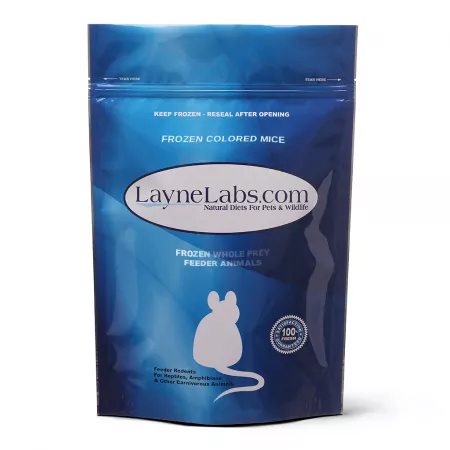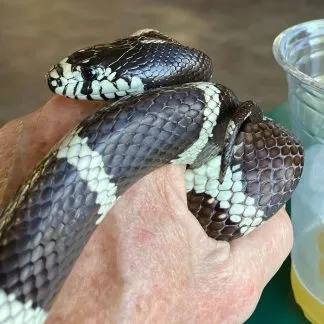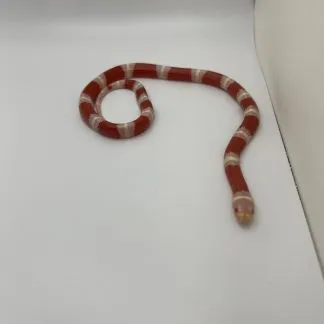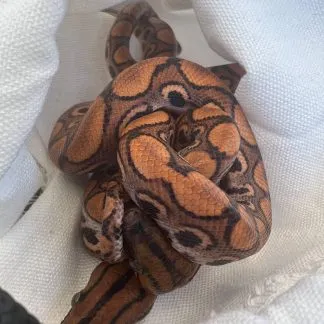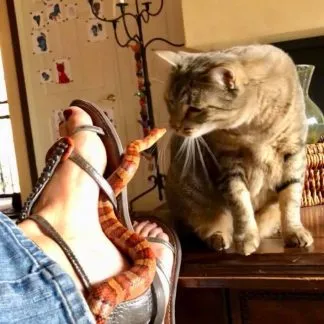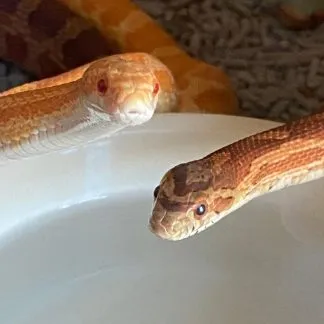Layne Labs colored feeder mice are great for transitioning animals onto frozen mice, as they look more like the natural prey of many types of wildlife. But there is one important difference. Our colored feeder mice are bred in our USDA licensed facility, with a constant flow of fresh air, clean drinking water, nutritious food and clean, dry bedding. This guarantees they will provide top quality nutrition for the animals in your care.
Layne Labs feeder mice are quickly and humanely euthanized; individually flash frozen with legs and tail tucked neatly under counted into re-closeable freezer bags and promptly shipped to your door, ensuring their freshness and quality.
What types of animals eat Colored Mice?
Reptiles:
Meat eating snakes and lizards being cared for in wildlife rehabilitation centers may be more likely to start feeding if offered frozen colored mice, which look more like what they eat in the wild. Pet reptiles, especially those picky eaters, might be intrigued enough by the difference in color and be more tempted to eat. Layne Labs colored mice are raised in the same way as our white mice, which means you can be sure you are feeding your snake or lizard top quality food.
Birds of Prey:
Many birds of prey (also known as raptors) feed primarily on rodents in the wild. Wild rodents are rarely white, so raptors coming into wildlife rehabilitation centers may not recognize white mice as prey at first. This makes Layne Labs colored mice a great choice for those who need to transition wild birds of prey onto frozen mice. Orphaned raptors being prepared for return to the wild can be given colored feeder mice as it comes closer to time for their release to get them used to natural colored prey.
Thousands of sick, injured or orphaned birds of prey are rescued every year and brought to local Wildlife Rehabilitation facilities to be cared for until they can return to the wild. If you find an injured, sick or orphaned raptor, or any other wild animal, please contact your nearest local wildlife rehabilitator. You can view our list of wildlife rehabilitators to find the one closest to you.
Wild Carnivore Diet:
Many wild carnivores depend on rodents for the majority of their diet. But carnivores who come into wildlife rehabilitation centers may not recognize white mice as prey. For them, offering some colored feeder mice can often get them started eating as they recover from illness or injury. For orphaned baby mammals feeding more natural looking prey helps them prepare for life back in the wild. And, while it can be convenient to feed carnivores in zoos or education facilities on commercial diet, the addition of whole colored mice can provide enrichment and dietary benefits.

